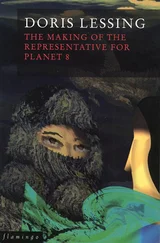Partly for that reason, partly to enjoy the company of friends, he began stopping at a café for discussions with the philosopher Harald Høffding after the regular Friday sessions of the Royal Danish Academy of Sciences and Letters, of which they were both members. The congenial physicist C. Christensen, who spent his childhood as a shepherd, soon added a third point of view. The men moved from café meetings to regular rotation among their homes. The philologist Vilhelm Thomsen joined them to make a formidable foursome: a physicist, a biologist, a philologist, a philosopher. Niels and Harald Bohr sat at their feet all through childhood.
As earnest of his commitment to female emancipation Christian Bohr taught review classes to prepare women for university study. One of his students was a Jewish banker’s daughter, Ellen Adler. Her family was cultured, wealthy, prominent in Danish life; her father was elected at various times to both the lower and upper houses of the Folketing, the Danish parliament. Christian Bohr courted her; they were married in 1881. She had a “lovable personality” and great unselfishness, a friend of her sons would say. 201Apparently she submerged her Judaism after her marriage. Nor did she matriculate at the university as she must originally have planned.
Christian and Ellen Bohr began married life in the Adler family townhouse that faced, across a wide street of ancient cobbles, Christianborg Palace, the seat of the Folketing. Niels Bohr was born in that favorable place on October 7, 1885, second child and first son. When his father accepted an appointment at the university in 1886 the Bohr family moved to a house beside the Surgical Academy, where the physiology laboratories were located. There Niels and his brother Harald, nineteen months younger, grew up.
* * *
As far back as Niels Bohr could remember, he liked to dream of great interrelationships. His father was fond of speaking in paradoxes; Niels may have discovered his dreaming in that paternal habit of mind. 202, 203At the same time the boy was profoundly literal-minded, a trait often undervalued that became his anchoring virtue as a physicist. Walking with him when he was about three years old, his father began pointing out the balanced structure of a tree—the trunk, the limbs, the branches, the twigs—assembling the tree for his son from its parts. The literal child saw the wholeness of the organism and dissented: if it wasn’t like that, he said, it wouldn’t be a tree. Bohr told that story all his life, the last time only days before he died, seventy-eight years old, in 1962. “I was from first youth able to say something about philosophical questions,” he summarized proudly then. And because of that ability, he said, “I was considered something of a different character.” 204
Harald Bohr was bright, witty, exuberant and assumed at first to be the smarter of the two brothers. “At a very early stage, however,” says Niels Bohr’s later collaborator and biographer Stefan Rozental, “Christian Bohr took the opposite view; he realized Niels’ great abilities and special gifts and the extent of his imagination.” The father phrased his realization in what would have been a cruel comparison if the brothers had been less devoted. 205Niels, he pronounced, was “the special one in the family.” 206
Assigned in the fifth grade to draw a house, Niels produced a remarkably mature drawing but counted the fence pickets first. He liked carpentry and metalworking; he was household handyman from an early age. “Even as a child [he] was considered the thinker of the family,” says a younger colleague, “and his father listened closely to his views on fundamental problems.” He almost certainly had trouble learning to write and always had trouble writing. 207, 208His mother served loyally as his amanuensis: he dictated his schoolwork to her and she copied it down.
He and Harald bonded in childhood close as twins. “There runs like a leitmotif above all else,” Rozental notices, “the inseparability that characterized the relationship between the two brothers.” They spoke and thought “à deux” recalls one of their friends. 209, 210“In my whole youth,” Bohr reminisced, “my brother played a very large part…. I had very much to do with my brother. He was in all respects more clever than I.” Harald in his turn told whoever asked that he was merely an ordinary person and his brother pure gold, and seems to have meant it. 211, 212
Speech is a clumsiness and writing an impoverishment. Not language but the surface of the body is the child’s first map of the world, undifferentiated between subject and object, coextensive with the world it maps until awakening consciousness divides it off. Niels Bohr liked to show how a stick used as a probe—a blind man’s cane, for example—became an extension of the arm. 213Feeling seemed to move to the end of the stick, he said. The observation was one he often repeated—it struck his physicist protégés as wondrous—like the story of the boy and the tree, because it was charged with emotional meaning for him.
He seems to have been a child of deep connection. That is a preverbal gift. His father, with his own Goethesque yearnings for purpose and wholeness—for natural unity, for the oceanic consolations of religion without the antique formalisms—especially sensed it. His overvalued expectation burdened the boy.
Religious conflict broke early. Niels “believed literally what he learnt from the lessons on religion at school,” says Oskar Klein. “For a long time this made the sensitive boy unhappy on account of his parents’ lack of faith.” Bohr at twenty-seven, in a Christmastime letter to his fiancée from Cambridge, remembered the unhappiness as paternal betrayal: “I see a little boy in the snow-covered street on his way to church. 214It was the only day his father went to church. Why? So the little boy would not feel different from other little boys. He never said a word to the little boy about belief or doubt, and the little boy believed with all of his heart.” 215
The difficulty with writing was a more ominous sign. The family patched the problem over by supplying him with his mother’s services as a secretary. He did not compose mentally while alone and then call in his helper. He composed on the spot, laboriously. That was the whispering that reminded C. P. Snow of the later Henry James. As an adult Bohr drafted and redrafted even private letters. His reworking of scientific papers in draft and then repeatedly in proof became legendary. 216Once after continued appeals to Zurich for the incomparable critical aid of the Austrian theoretical physicist Wolfgang Pauli, who knew Bohr well, Pauli responded warily, “If the last proof is sent away, then I will come.” Bohr collaborated first with his mother and with Harald, then with his wife, then with a lifelong series of younger physicists. 217They cherished the opportunity of working with Bohr, but the experience could be disturbing. He wanted not only their attention but also their intellectual and emotional commitment: he wanted to convince his collaborators that he was right. Until he succeeded he doubted his conclusions himself, or at least doubted the language of their formulation.
Behind the difficulty with writing lay another, more pervasive difficulty. It took the form of anxiety that without the extraordinary support of his mother and his brother would have been crippling. For a time, it was. 218
It may have emerged first as religious doubt, which appeared, according to Klein, when Niels was “a young man.” Bohr doubted as he had believed, “with unusual resolution.” By the time he matriculated at the University of Copenhagen in the autumn of 1903, when he was eighteen, the doubt had become pervasive, intoxicating him with terrifying infinities. 219
Читать дальше












